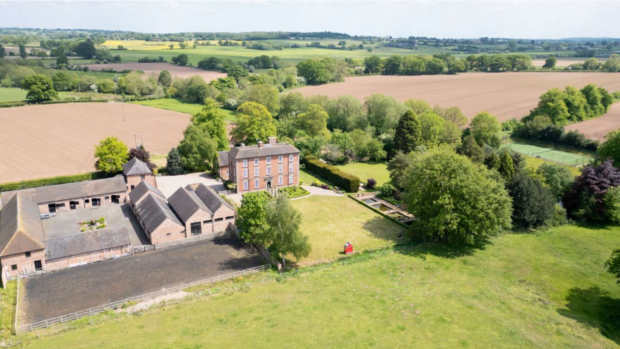Getting your hands on a good equestrian property these days is nearly as hard as bagging eventing’s Rolex Grand Slam. The pressure on land is intense, homes with acres are few, and competition is fierce. And if the amount of viewings that took place after Christmas is anything to go by, the market will soon become extremely active.
“Last year’s market showed an upsurge in property sales during the first quarter of 2006, and 2007 is set to display a similar trend, as City buyers are due record bonus payouts around the end of January,” says Zoe Napier of Fenn Wright.
So, what can you do to secure that elusive home with acres? Plenty, according to specialist agents. The obvious first step is to register the details of the property you are looking for with reputable agents. Keeping in contact with them also helps, says Jan Keenleyside of McCarthy Holden, so that “when valuing new properties you and your requirements immediately come to the agent’s mind. We have several occasions where a particular purchaser has come to mind, the vendor has consented to a pre-marketing viewing, and the outcome has been successful”.
What is perhaps less obvious, however, is that now is also the time to start arranging your finances, and appointing a solicitor, so that you are ready to buy should the opportunity arise.
“To put yourself in the best position possible, sell your own home and move to rented accommodation, so you can purchase with speed,” explains Diana Andrews of Churchill Country & Equestrian.
Once you chance upon a potentially good home, try to take a swift (but not rash!) decision. If you like what you see at first viewing, arrange a second one, preferably for a different time of the day.
Between the two viewings, do some research on the area, so you know how horse-friendly it is, whether there are any good facilities and what the local shops, schools and transport links are like. It pays off to spend at least a day in your chosen location, speaking to locals. You may also want to quiz the selling agent for more information.
“Ask questions appropriate to you,” suggests Diana Andrews. “What is the soil like? How much of the acreage is grazing land, wooded or lying under water in a pond or lake? Does it flood? How quiet is the lane outside the property for hacking? Is there a rush hour morning and evening? Have the current owners been turned down for any equestrian planning? Have they taken any hay or haylage off the land? Does the property have any footpaths going through its land?”
During the second viewing, look for potential problems such as a lack of storage space or missing tiles in the roof. Examine the state of paddocks, fencing and stables, and ask all the relevant questions about council tax, running costs and any constraints that might affect the house, such as listing or ties.
When you do decide to buy, though, act quickly. James Baker of Strutt & Parker recommends offering the guide price, or even in excess of it. Equally important, however, is the willingness to accommodate the needs of the vendor. Sellers might choose a slightly lower offer over a higher one if the buyer makes their life easier.
For example, says James: “Be flexible on the vacation of the vendor’s stables, in order for the horses to remain on the property until the vendor finds suitable alternative stabling.”
And it never hurts to be personable and polite to both agents and vendors.
“After all,” says Diana Andrews, “you’re always happier to do business with people
you like.”
View the H&H equestrian property for sale database



